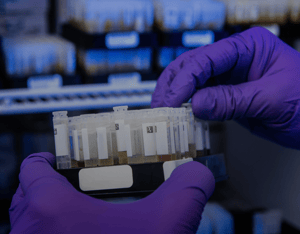Dr. Michael Fulks reviews a recent study revealing the epigenetic changes to DNA from both smokers and vapers, challenging the assumption that vaping is safer than smoking.
Epigenetics is a hard slog for those of us whose “prime education years” were both long ago and focused on the still evolving science of genetics (no epi-). But, understanding epigenetic changes to DNA is proving critical to mortality risk assessment so I have to face the challenge and so do you. DNA sites where a cytosine nucleotide is followed by a guanine nucleotide (labeled CpG) usually become methylated (methyl groups attached) regulating DNA function as we move from infancy to adulthood. Smoking and vaping (our topics today) as well as diet, environment, and other lifestyle factors can chronically alter that methylation pattern thereby selectively up- or down-regulating gene function. Although CpG nucleotides are the prime site of methylation, other DNA sites may become methylated as well affecting their function. Epigenetics is the study of all this.
We usually measure epigenetic changes in the lab as identifiers of behaviors such as smoking or heavy alcohol consumption because such changes are persistent and more extensive with heavier exposure. But, at least for smoking and vaping, those epigenetic changes are not just lab markers but are a prime cause of the increased mortality associated with those behaviors by altering gene expression up or down. This impacts immunological function, platelet activation, tumor suppression and promotion, and other cellular processes both causing disease (e.g. COPD, CAD) and increasing cancer risk.
That brings us to a recent article by Stella Tommasi, et al. looking at the epigenetic changes in 10 smokers and 10 vapers compared to 10 non-users, all young adults matched for age, sex and ethnicity. The subject numbers are small, but their time-consuming analysis included the entire genome rather than the much smaller protein-coding exome usually analyzed. We currently have little objective data on whether vaping has lower mortality risk than smoking as usage began only recently. Instead, pundits assume a lower risk as vaping seemingly exposes users to fewer toxic ingredients. However, the inhaled substances overlap in addition to unique, potentially toxic, elements for each method of nicotine consumption. Comparing the epigenetic changes, as done in this study, allows a more rapid method to assess potential risk as well as letting us look at what and where those changes are across the entire genome.
The authors found that vapers and smokers differ in the number of abnormally methylated areas (831 vs 2,863) but with similar distribution. Of the 831 abnormal methylation sites for vapers, 46% were shared with smokers likely resulting in shared mortality risk. The impact of the other 54% is unproven but may also contribute to risk unique to vaping. Further analysis of specific abnormal DNA sites for smokers and vapers and their likely functional impact was also performed by the authors but not discussed here.
Some curious differences and similarities between smoker, vaper and non-user subjects are documented in supplement table E1 (available free as is the abstract but not the article) although not discussed in the article. Non-users all had college degrees compared to 5 smokers and 3 vapers. Plasma cotinine was almost identical between smokers and vapers, but alcohol consumption was similar between vapers and non-users but almost doubled in smokers. These matches/mismatches might also potentially (directly or as markers of other factors) impact the differing methylation patterns seen.
The epigenetic changes noted for both smokers and vapers further our understanding of what may be a prime mechanism of cellular damage and cancer risk. I would regard this article as preliminary and it may not need not be explored beyond the abstract, but it clearly should give pause to the expectation that vapers will do better than smokers until mortality data is available.
About the Author
Michael Fulks, MD, Consulting Medical Director, is board-certified in internal and insurance medicine. After leaving practice, he served as a medical director, creating or editing several underwriting manuals and preferred programs. More recently, Mike has consulted for CRL participating in its mortality research on laboratory test results, BP and build, and in the development of risk-scoring tools for laboratory and non-laboratory data.






